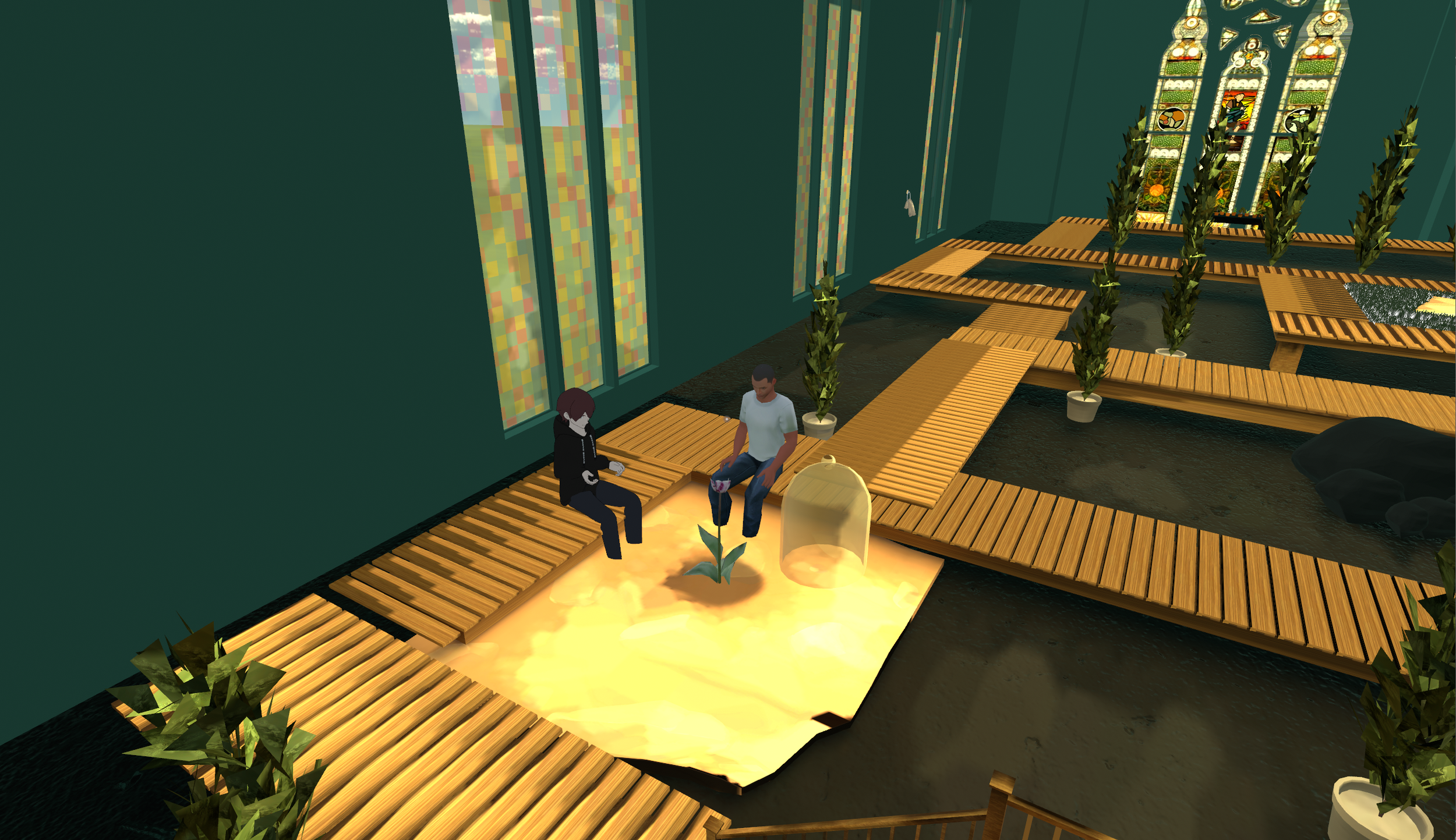Beyond The Garden of Adrian: Examining intimacy, presence, and liveness in virtual reality performance
The COVID-19 pandemic led to the shutdown of the theatre industry. For over 18 months, performance artists turned to digital and virtual media to create. For some artists and audiences, this was only a temporary fix before getting back to “real” live performance, but I believe we can improve the quality of virtual performance for future creators. This project attempts to discover ways to improve the emotional experience of virtual "live" performance by recreating one piece by performance artist Adrian Howells in virtual reality.
Howells was a one-on-one performer known for his works that invited honest, emotional participation. His pieces frequently involved acts of care, touch, or confession, and they are well-documented, as are audience responses to them.
This project attempts to answer the question: how can a virtual performance evoke the same emotions and empathy in its audience members that a similar or identical live performance did?








Beyond the Garden of Adrian is an experiment in virtual reality performance. It consists of a replication of Adrian Howells’ original Garden of Adrian built using 3DS Max and VR Chat. It is a live performance in that the actor playing “Adrian” is sharing the same virtual space as each audience-participant - they can converse and interact in real time. Nothing is pre-recorded.
In 2024, my team (Olly Guo and Nicky Chier) and I ran two different versions of Beyond the Garden of Adrian with audience-participants. Each time we gathered feedback from those who experienced the piece, similar to what Adrian Howells did in 2009 with the original. This feedback led to small changes between Version 0 (our first iteration) and Version 1 (our 2nd). Publication of these findings is currently under review.
Beyond the Garden of Adrian was presented at the Spectacle Vivant, Scènes Numériques Digital Showcase, as part of the Festival d’Avignon in July 2025. The role of Adrian was played by Nicky Chier; programming and interaction design by Olly Guo.
The Garden of Adrian - 2009
The original piece was part of the West End Festival in 2009, performed at the University of Glasgow
“Performer Adrian Howells accompanies individual audience members on a physical and metaphorical journey through interactive stations installed around Gilmorehill. This journey intends to make participants explore the possibility of achieving a sense of absolution or ease through revelation, confession and contemplation…”
The Garden of Adrian, performed at Gilmorehill, University of Glasgow, 2009; designed by Minty Donald, lighting design by Mike Brookes; photography by Minty Donald.

